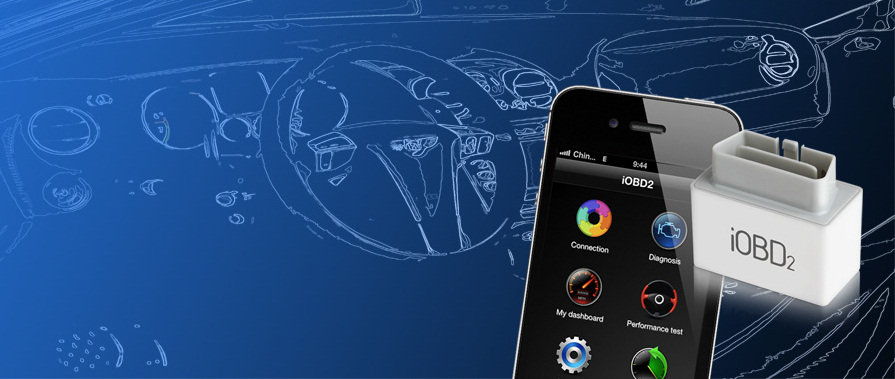Do you
know that if your car has a turbocharged engine, you can get turbo boost
pressure with iOBD2 although there is no a boost gauge on iOBD2? It is easy. Simply
read the MAP (Manifold Absolute Pressure) value, and then subtract 100Kpa and
you will get the boost pressure.
I didn’t
get this idea until one of our customers sent me a message. Here is the story.
A few
days ago, one of our customers sent me a message on our company Facebook page saying
he could not find boost gauge on iOBD2 as he mainly wanted to know the boost
pressure of his 2013 Hyundai Veloster Turbo. I said sorry to him that iOBD2 app
was designed according to the generic OBD II specification and a support for boost
gauge was not demanded in the specification. The next day he said his Veloster Turbo hit
202 KPa (which is too high) and wanted to confirm if there was problem with the
app or his car. This time I was confused. How did he get the 202Kpa as the app
did not have a boost pressure gauge? He told me that he got a max MAP value of 221Kpa but had been subtracting 100Kpa, so that
made a boost pressure of 121Kpa which is normal. Now I understood that the
202Kpa he got was a MAP value but not a boost pressure value.
Yet I
still want to know the theory behind it and the following was what I found from
volvoforums.com.
“MAP
sensors measure absolute pressure. Boost sensors or gauges measure the amount of
pressure above a set absolute pressure. That set absolute pressure
is usually 100 kPa. This is commonly referred to as gauge pressure. Boost
pressure is relative to absolute pressure - as one increases or decreases, so
does the other. It is a one-to-one relationship with an offset of -100 kPa for
boost pressure. Thus a MAP sensor will always read 100 kPa more than a boost
sensor measuring the same conditions. A MAP sensor will never display a
negative reading because it is measuring absolute pressure, where zero is the
total absence of pressure (it is possible to have conditions where negative
absolute pressure can be observed, but none of those conditions occur in the
air intake of an internal combustion engine). Boost sensors can display
negative readings, indicating vacuum or suction (a
condition of lower pressure than the surrounding atmosphere). In forced
induction engines (supercharged or turbocharged), a negative boost reading
indicates that the engine is drawing air faster than it is being supplied,
creating suction. This is often called vacuum pressure when referring to
internal combustion engines.
In
short: most boost sensors will read 100 kPa less than a MAP sensor reads. One
can convert boost to MAP by adding 100 kPa. One can convert from MAP to boost
by subtracting 100 kPa.”
Download the iOBD2 app on Apple Store or Google play.


Nice post. iOBD2 is such a amazing product. Thanks for sharing this details with us.
ReplyDeletelaunch x431 | x431 scanner | http://www.buyx431.com
I am convinced that your website is convinced that your web post is very new.
ReplyDeleteMore Intresting offer on product at best price:
VW/Audi scanner
BMW scanner
Mercedes Benz scanner
BMW ICOM Next scanner
Porsche PIWIS II scanner
Mercedes SD connect C4
BMW ICOM A2 scanner
Mercedes scanner
Good luck to everyone
film izle - sex hikayeleri - sex hikayesi - erotik hikaye -
ReplyDeleteankara escort - bornova escort - alsancak escort - çeşme escort - izmir escort - smm panel - instagram takipçi satın al - instagram takipçi satın al - instagram takipçi satın al - instagram takipçi satın al - haber - instagram takipçi hilesi - instagram takipçi satın al - izmir evden eve nakliyat - seocu - instagram takipçi hilesi - instagram takipçi satın al - izmir escort - takipçi satın al - instagram takipçi satın al - tiktok takipçi satın al - instagram takipçi satın al - instagram takipçi satın al - instagram takipçi satın al - instagram takibi bırakanlar - buca escort -
karşıyaka escort - instagram takipçi hilesi
perde modelleri
ReplyDeletesms onay
Mobil Odeme Bozdurma
nft nasıl alinir
Ankara Evden Eve Nakliyat
trafik sigortası
dedektör
web sitesi kurma
ask kitaplari
smm panel
ReplyDeleteSmm panel
iş ilanları
İnstagram Takipçi Satın Al
Hirdavatci Burada
beyazesyateknikservisi.com.tr
SERVİS
tiktok jeton hilesi
Good content. You write beautiful things.
ReplyDeletehacklink
taksi
mrbahis
hacklink
sportsbet
korsan taksi
vbet
mrbahis
sportsbet
Good text Write good content success. Thank you
ReplyDeletekibris bahis siteleri
bonus veren siteler
betpark
poker siteleri
kralbet
mobil ödeme bahis
betmatik
tipobet
niğde
ReplyDeleteyalova
çeşme
mardin
8XLZ
yurtdışı kargo
ReplyDeleteresimli magnet
instagram takipçi satın al
yurtdışı kargo
sms onay
dijital kartvizit
dijital kartvizit
https://nobetci-eczane.org/
CSW31K
bitlis
ReplyDeleteedirne
hatay
ağrı
urfa
0XA4P
salt likit
ReplyDeletesalt likit
DKYC